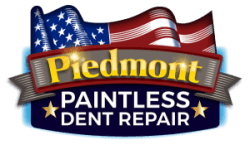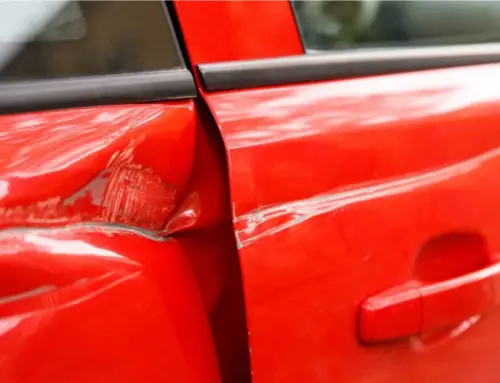If you’ve ever returned to your car to find an unsightly dent courtesy of a stray shopping cart or, even worse, hailstones, you know how frustrating it can be. Thankfully, there’s a quick and effective solution for fixing that bumper dent or hail damage. Professional dent repair services specialize in restoring your vehicle’s body to its original condition without the need for costly and time-consuming bodywork.
Using the latest techniques, such as Paintless Dent Repair (PDR), experts can efficiently remove dents, maintaining your car’s original paint and avoiding any decrease in value.
So, whether it’s a minor bump or the aftermath of a storm, professional dent repair can get your car looking its best again with minimal hassle. Don’t let dents dampen your car’s look or your mood; let the experts take care of them efficiently!
How does hail damage affect car bumpers?
Hail damage can have various effects on car bumpers, depending on the severity of the hailstorm and the construction of the bumper itself. Here are some common ways in which hail damage can affect car bumpers:
- Dents and Dings: Hailstones can strike the bumper’s surface, leaving behind numerous small dents and dings. These dents may vary in size and depth, ranging from minor surface imperfections to more significant indentations that affect the bumper’s appearance and integrity.
- Paint Damage: Besides causing dents, hailstones can chip or scratch the paint on the bumper’s surface. This paint damage detracts from the vehicle’s aesthetics and exposes the underlying metal or plastic to the elements, increasing the risk of rust or corrosion over time.
- Cracks or Fractures: In severe hailstorms, large hailstones or repeated impacts can cause cracks or fractures in the bumper’s material. These cracks may appear as hairline fractures or more significant breaks, compromising the bumper’s structural integrity and potentially leading to further damage if left unaddressed.
- Displacement or Misalignment: In extreme cases, hail damage can cause the bumper to become displaced or misaligned from its original position. This displacement may result from the force of impact or the shifting of underlying components, affecting the bumper’s fit and function on the vehicle.
Hail damage can significantly impact car bumpers’ appearance, integrity, and functionality, necessitating prompt repair to restore the vehicle’s aesthetics and structural integrity. Professional dent repair services, such as paintless dent repair (PDR), are often employed to address hail damage efficiently and effectively, preserving the bumper’s appearance and functionality while minimizing costs and downtime for the vehicle owner.
What are the most effective methods for repairing hail dents on bumpers?
Repairing hail dents on bumpers requires careful consideration of the damage’s extent and the bumper’s material. Here are some of the most effective methods for repairing hail dents on bumpers:
- Paintless Dent Repair (PDR): One of the most popular and successful bumper hail ding repair treatments is PDR. This method uses specialized equipment to gently massage the dented region behind the bumper, pushing it out without damaging the paint. PDR works best for shallow dents and dings and is faster and cheaper than traditional bodywork.
- Heat and Cold Techniques: Heated and cooled methods modify bumper metal or plastic to regain shape. Technicians can push out dents by heating and fast cooling metal or plastic with compressed air or dry ice. This procedure works for shallow and deep dents and hail-damaged bumpers.
- Traditional Bodywork: For significant hail damage or dents that PDR or heat/cold cannot heal, traditional bodywork may be needed. This may require filling the dent with body filler, sanding it, and painting it to match the bumper. Traditional bodywork is effective but takes longer and costs more than PDR or heat/cold.
The most effective method for repairing hail dents on bumpers will depend on the severity of the damage and the bumper material’s specific characteristics. PDR and heat/cold techniques are often preferred for their efficiency, cost-effectiveness, and ability to preserve the original paint finish.
Can paintless dent repair techniques fix bumper dents caused by hail?
Yes, paintless dent repair (PDR) techniques can fix bumper dents caused by hail, provided the dents are shallow, and the paint is not significantly damaged. PDR is a non-invasive method for repairing dents that involves accessing the backside of the damaged panel and carefully massaging the dent out from the inside. This technique is particularly effective for shallow dents and dings with intact paint.
PDR can often be a highly effective solution for bumper dents caused by hail. Since bumpers are typically made of plastic or composite materials, they are more flexible than metal panels, making them well-suited to PDR techniques. Skilled technicians can access the backside of the bumper, either through access points or by removing interior panels, and use specialized tools to massage the dents out gradually.
However, it’s important to note that PDR may not be suitable for all bumper dents caused by hail. If the dents are too deep or the paint is damaged, traditional bodywork methods may be required to repair the bumper properly. In such cases, the damaged area may need to be filled, sanded, and repainted to restore the bumper’s appearance and structural integrity.
Are specialized tools or equipment required for efficient hail damage repair on car bumpers?
Efficient hail damage repair on car bumpers often requires specialized tools and equipment to ensure precise and effective repair. One essential tool used in paintless dent repair (PDR) for bumper repair is a variety of dent removal tools specifically designed for accessing and manipulating dented areas.
These tools may include metal rods of various shapes and sizes and soft-tipped tools that help prevent damage to the paint surface. Additionally, technicians may use specialized lighting equipment, such as LED lights or reflector boards, to properly illuminate the dented areas and identify subtle imperfections.
In cases where heat and cold techniques are employed, technicians may use heat guns or infrared lamps to apply controlled heat to the dented area, followed by compressed air or dry ice to rapidly cool the metal or plastic and encourage it to contract. These tools and equipment are crucial for effectively reshaping the bumper and restoring it to its original condition without damaging the paint or underlying structure.
Additionally, if the damage is too severe for PDR techniques, specialized tools and equipment may also be used for traditional bodywork methods, such as sanders, body fillers, and paint sprayers. Using specialized tools and equipment is essential for efficient and high-quality hail damage repair on car bumpers, ensuring professional results and customer satisfaction.
Restore Your Bumper with Expert Hail Dent Repair!
Trust Piedmont Dent Repair to restore your bumper to its former glory with expert hail dent repair services. Our skilled technicians specialize in efficiently repairing hail damage, ensuring your bumper looks as good as new. We’ll use advanced techniques and tools to address dents and dings with precision and care, preserving your vehicle’s appearance and value.
Say goodbye to unsightly hail dents and hello to a flawless bumper finish. Schedule your expert hail dent repair with Piedmont Dent Repair today, and let us restore your bumper to perfection!






